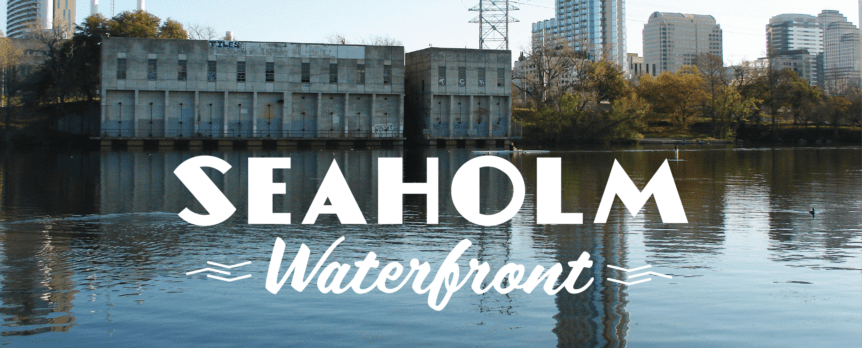Architecture and Urban Design Firm’s In-Depth Study Shows Potential Concepts for the Decommissioned Seaholm Intake Building
AUSTIN, TX (June 4, 2018) – Austin Parks Foundation (APF), The Trail Foundation (TTF), and the City of Austin Parks and Recreation Department (PARD) announced today the results and recommendations of the planning study for the future of the historic Seaholm Intake structure and its surrounding parkland completed by internationally recognized architecture and urban design practice Studio Gang. The Seaholm Waterfront study reveals a series of potential concepts to improve the park and repurpose the decommissioned Seaholm Intake structures for public use and recreation.
“We are excited to present the study results and our recommendation to the community,” said Colin Wallis, CEO of Austin Parks Foundation. “Turning this historic building and underutilized park space into a usable and welcoming public amenity for our whole community to enjoy will be a big win for Austin.”
“We’re thrilled to reach this stage in the process of bringing the Seaholm area to its full potential,” says Heidi Anderson, executive director of The Trail Foundation. “This is such an important space and landmark along the Ann and Roy Butler Hike-and-Bike Trail, and as evidenced by our public input efforts, thousands of people are interested in and care about ensuring the greatest possible benefit for all.”
The study’s goal was to develop a highly adaptable, long-range, and sustainable vision for the historic Seaholm Intake structure and underutilized surrounding parkland. Work on early phases, including safety requirements and code compliance improvements, could begin in the near future, while the other phases and amenities would be built out in the coming years.
Completed over a period of months, the study included extensive site research, a review of past planning and design efforts, sustained engagement with the community through more than forty workshops and open houses, and more than 1,000 online survey responses.
“Our study offers ways to knit together the historic architecture and rich ecological context of the waterfront and trails to better serve the Austin community,” said Jeanne Gang, founding principal of Studio Gang. “We are thrilled to share our findings, developed in partnership with the city and its citizens.”
The design concept recommended by the APF, TTF, and PARD incorporates various elements from all three options presented by Studio Gang to open up the expansive interior while maintaining the historic character of the structure. Strategic design interventions transform the building and surrounding parkland into a flexible and accessible public space that can be used for day-to-day activities, events, and community gatherings. To support these new functions, the proposed design includes landscape improvements to the surrounding parkland to create a flexible lawn space, supplemented by an event pavilion, amenity porch, multiple water access points, trail improvements, and an outdoor amphitheater. Several important principles guided the planning process and design recommendations, including embracing and preserving the historic integrity of the building, engaging with the local community and experts, restoring and diversifying the ecology in the area, and building sustainable principles into the design and operational models.
“The Parks Department is looking forward to the public having an opportunity to see the study’s vision and recommendations for Seaholm Waterfront District,” said PARD Acting Director Kimberly McNeeley. “This parkland contributes an incredible opportunity to provide new recreational uses for both Austin residents and visitors.”
The plan will be presented this summer to various city commissions and boards.
Originally constructed in conjunction with the Seaholm Power Plant in the 1950s, the Seaholm Intake structure was decommissioned and dedicated as parkland when the power plant was no longer needed to provide power to the City of Austin. Today, the building and parkland represent a unique opportunity to create a vibrant recreational and publicly accessible destination.
Austin Parks Foundation and The Trail Foundation fully funded this study in the amount of $450,000. For more information about the project, please visit www.austintexas.gov/seaholmwaterfront.

